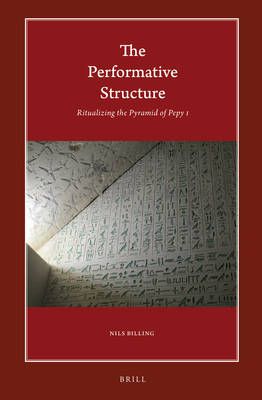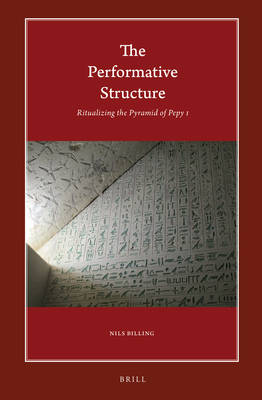
- Afhalen na 1 uur in een winkel met voorraad
- Gratis thuislevering in België vanaf € 30
- Ruim aanbod met 7 miljoen producten
- Afhalen na 1 uur in een winkel met voorraad
- Gratis thuislevering in België vanaf € 30
- Ruim aanbod met 7 miljoen producten
Zoeken
Omschrijving
In The Performative Structure: Ritualizing the Pyramid of Pepy I, Nils Billing investigates the ancient Egyptian pyramid complex as a performative structure, ritualized through the operative faculty inherent in monumental architecture, text, and image. The main body of research is given over to an analysis of the Pyramid Texts found in the pyramid of king Pepy I of the Sixth Dynasty (ca 2300 BCE). It is demonstrated that the texts were distributed on distinct space-bound thematic and ritual levels in order to perpetuate a cultic activity from which the lord of the tomb could be transformed by moving through the different chambers and corridors towards the exit. Just as the decoration program of the mortuary temple once delineated the ritual and ideological structure of the royal mortuary cult, the corpus of texts distributed in the pyramid provided a monumentalized performative structure that effectuated the perennial rebirth for its owner.
Specificaties
Betrokkenen
- Auteur(s):
- Uitgeverij:
Inhoud
- Aantal bladzijden:
- 644
- Taal:
- Engels
- Reeks:
- Reeksnummer:
- nr. 4
Eigenschappen
- Productcode (EAN):
- 9789004372368
- Verschijningsdatum:
- 26/07/2018
- Uitvoering:
- Hardcover
- Formaat:
- Genaaid
- Afmetingen:
- 155 mm x 236 mm
- Gewicht:
- 1297 g

Alleen bij Standaard Boekhandel
+ 564 punten op je klantenkaart van Standaard Boekhandel
Beoordelingen
We publiceren alleen reviews die voldoen aan de voorwaarden voor reviews. Bekijk onze voorwaarden voor reviews.








